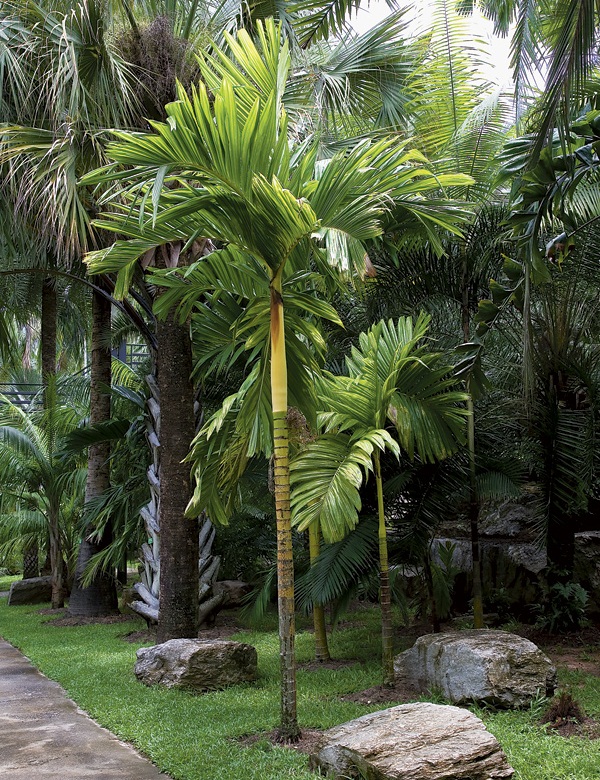Sciencetific Name: Adonidia merrillii,
Family Name: ARECACEAE
is a palm tree species native to the Philippines(Palawan and Danjugan Island). This palm was cultivated for centuries in East Asia before becoming a staple in the West. It is reportedly naturalized in the West Indies and Florida. It is commonly known as the "Christmas palm" because its fruits become bright scarlet and tend to be that color in winter. This palm is typically fairly small and slender, normally attaining 25 feet or 8 meters in height but has attained over 40 feet in some instances Most plants maintain 5-7 fronds when young, gradually building up the crown as the palm ages, and sometimes reaches 10-12 fronds when mature.
The Adonidia palm, sometimes described as the "mini-royal-palm", adapts well to landscaping and cultivation, as well as growing in pots. It is able to withstand large amounts of rainfall and can tolerate short droughts, though it does not like sea salt. Adonidias prefer full sun but can withstand partial shade. They are not tolerant of the cold, making their perennial outdoor usage limited to frost-free zones. One of the most common landscape palms in Southern Florida (used at such places as the Miami Opentennis tournament), it is often clustered together in groups of 2-3, sometimes four. Because, in its natural state, it grows as a solitary palm, this batching together of several heads runs the risk of the head competing against themselves. In order to minimize the risk, nurseries train these palms when young to arch outward, instead of growing straight up.
